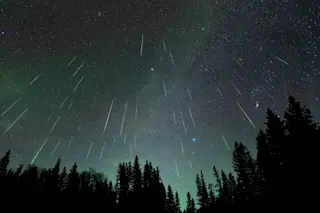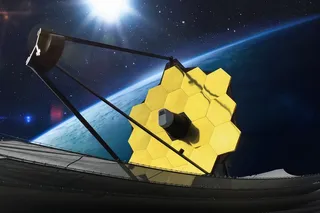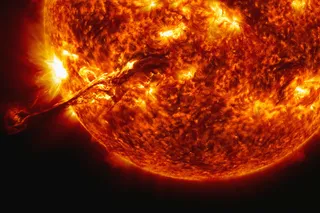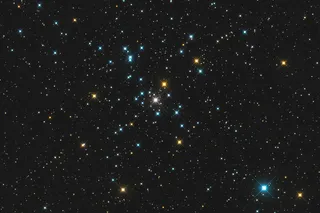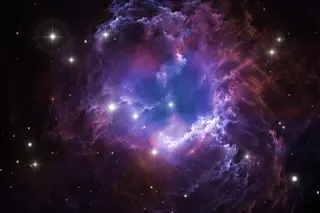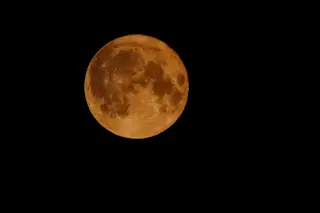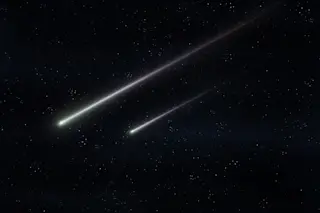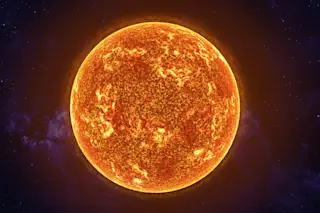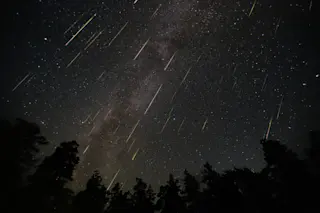Every April, as winter’s grip finally loosens and the nights grow a little warmer, Earth drifts through a centuries-old cloud of cosmic dust. That’s when the Lyrid meteor shower — one of the oldest known and most reliable meteor showers of the year — lights up the night.
The Lyrids will peak overnight from April 21, 2025 into April 22, 2025. On the days near that peak, patient skywatchers may be treated to a modest but mesmerizing display of shooting stars streaking across the sky. Whether you’re a seasoned stargazer or just looking for a reason to stay up late, here’s everything you need to know about catching the annual celestial show.
What Is the Lyrid Meteor Shower?
The Lyrid meteor shower is one of the oldest meteor showers on record. Ancient Chinese astronomers documented it as far back as 687 B.C.E., noting how the "stars fell like rain" in the spring sky. What they witnessed were actually bits of dust and debris shed by Comet C/1861 G1 (Thatcher). The comet takes about 415 years to orbit the Sun, but Earth crosses its dusty orbital trail every April.
As our planet plows through the dust cloud, tiny particles — no bigger than grains of sand — occasionally slam into Earth’s atmosphere at nearly 30 miles per second. Due to intense frictional heating, they burn up and break apart in brilliant flashes, creating the streaks of light we call meteors, or “shooting stars.”
Where to See the Lyrid Meteor Shower
Those in the Northern Hemisphere will have the best views of the Lyrids, as the radiant — the point in the sky where the meteors appear to originate — will climb high overhead over the course of the night. This radiant is located near the constellation Lyra (the Harp), which rises in the northeast and contains the fifth brightest star in the sky, Vega.
If you’re not familiar with the night sky, don’t sweat it. While Lyrids appear to radiate from the constellation Lyra, you don’t need to pinpoint that exact location to enjoy the show. In fact, many of the meteors will blaze across the sky far from the radiant point. That’s why your best approach is to find a wide, unobstructed view of the night sky, ideally far away from trees, buildings, and especially light pollution. The broader your view, the better your chances of catching the fleeting streaks of cosmic debris.
Read More: Shooting Stars Could Just Be Space Debris Moving at 100,000 Miles Per Hour
How to See the Lyrid Meteor Shower
You don’t need a telescope or fancy equipment to enjoy a meteor shower like the Lyrids. In fact, your best tools are your eyes, patience, perhaps a reclining chair, and a warm set of clothes or a blanket. Below are just a few easy tips that can help you get the most out of your meteor-watching night:
Find a Dark Spot: Get as far away from artificial lights as you can. The darker your location, the more meteors you’ll be able to see.
Let Your Eyes Adjust: It takes 20 to 30 minutes for your eyes to fully adapt to the dark. And be sure to avoid checking your phone or looking at any bright lights while you are meteor-hunting.
Lie Back and Watch the Sky: Bring a reclining chair or sleeping bag to lounge in. Looking up at the sky for long periods of time can strain your neck, and comfort makes a big difference when you’re patiently waiting to spot some meteors.
Be Patient: Meteor showers are not fireworks shows. You may have to wait several minutes between meteors. Give yourself at least an hour outside to have a reasonable chance of spotting a few good ones.
Check the Weather: Cloud cover can ruin any stargazing night. Keep an eye on your local forecast and be ready to change locations if you need to.
When Will the Lyrid Meteor Shower Peak?
The Lyrids are active from April 17, 2025, to April 26, 2025, but the best time to view them is overnight April 21, 2025, into the early hours of April 22, 2025. That’s when meteor activity should be at its highest.
Under ideal conditions — meaning clear, dark skies, far from city lights — observers can expect to spot up to about 15 meteors per hour during the peak. However, the actual number you’ll see will vary depending on sky conditions, light pollution, how long you stay outside, and, most of all, luck.
During the peak, the waning crescent Moon will be about 34 percent illuminated, and it won’t rise until around 3:30 a.m. local daylight time. That means the sky will remain relatively dark for much of the night, offering better visibility during the earlier part of the show.
Could the Lyrids Surprise Us?
While the Lyrids are generally a modest meteor shower, they do have a history of unexpected outbursts. In 1803, observers in Virginia reported seeing as many as 700 meteors per hour, and smaller surges have been reported in 1922 (Greece), 1945 (Japan), and 1982 (U.S.).
But even if 2025 doesn’t bring a surprise outburst, the Lyrids are still a beautiful way to connect with the cosmos. They remind us that Earth is constantly moving through a dynamic solar system, crossing paths with ancient dusty trails left behind by comets.
So grab a blanket, keep your phone in your pocket, and take in what the night sky has to offer during this year’s Lyrid meteor shower.
Read More: Meteorites From the Earliest Planets Reveal How Earth Lost Certain Elements
Article Sources
Our writers at Discovermagazine.com use peer-reviewed studies and high-quality sources for our articles, and our editors review for scientific accuracy and editorial standards. Review the sources used below for this article:
NASA. C/1861 G1 (Thatcher)
Time and Date. Lyrids Meteor Shower 2025
Britannica. Lyra
Britannica. Vega
Royal Museums Greenwich. Lyrid Meteor Shower
The American Meteor Society. Meteor Shower Calendar 2025-2026
The Planetary Society. The Lyrid meteor shower 2025: How to watch
Time and Date. Chicago, Illinois, USA — Moonrise, Moonset, and Moon Phases, April 2025
Planetary and Space Science. The Lyrids meteor shower: A historical perspective
NASA. Lyrids Meteor Shower


